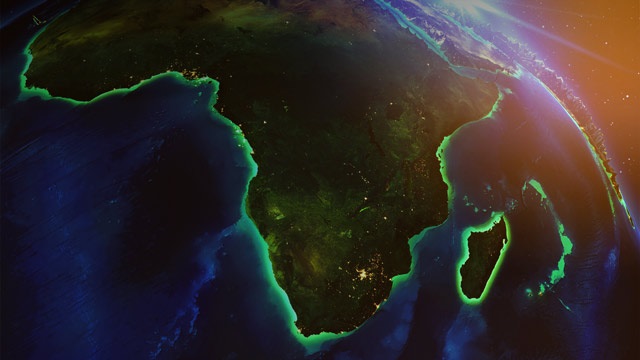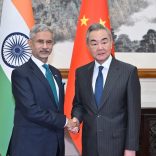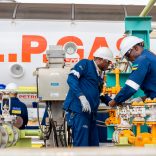India’s foreign minister sees progress in China ties on first visit since 2020
Above-trend growth of 5.1% expected for global economy in 2021 – Fitch Solutions

Image: Fitch Solutions
Above-trend growth of 5.1% is expected for the global economy this year, independent solutions and insights firm Fitch Solutions Country Risk and Industry Research revealed during a webinar on October 21.
Growth was likely to slow to 4.2% in 2022, it added.
According to Fitch Solutions country risk for sub-Saharan Africa head Jane Marley, this meant that the global economy would see two strong years of growth, after which growth would “return to trend” in 2023.
“We continue to expect emerging markets, as a whole, to outperform across all three years, and so performance is chiefly down to Asia, which we expect to grow by about 7.8% this year,” she added.
Latin America will also be a fast-growing region this year, as it recovers from a steep contraction in 2020, but also as commodity prices continue to provide a tailwind to growth.
“Just like we think global growth remains strong this year, at the same time we also think global growth has probably peaked,” she further said.
While the year-on-year comparisons are less flattering, the bulk of the easing of Covid-19 restrictions are now behind the majority of the world, which can now focus on mitigating supply side issues such as temporary chip shortages or label commodity shortages, which will continue to cap growth and momentum.
Additionally, the global economy was seemingly past the peak in terms of policy accommodation, which meant that monetary policy was starting to tighten, particularly in emerging markets, and fiscal support was also starting to be removed, albeit slowly, Marley said.
There are also downside risks to Chinese growth, as new viral outbreaks lead to new lockdowns, the property sector faces significant stress and slowing credit growth threatens to weigh on Chinese demand in general.
Sub-Saharan Africa, meanwhile, was expected to underperform given low vaccination rates and ongoing structural challenges, Marley said.
For sub-Saharan Africa, Fitch Solutions expects growth of about 3.2% this year, following a contraction of 1.9% in 2020. Growth will then likely tick upwards to 3.7% in 2022.
This forecast mainly reflects the company’s expectation of a wider roll-out of vaccination programmes in the year ahead, though the forecast still remains largely below the average growth rates of 2019.
“There are a number of reasons for the relative underperformance over 2021 and 2022. While fiscal deficits will certainly remain high by historical levels, we expect the fiscal policy will tighten in most markets,” Marley commented.
She added that the key constraints on growth, however, this year in particular, would be Covid-19, for which restrictions had begun to ease.
Marley attributed this, in part, to the progress made in vaccinating people across the region.
“While we think a return to [a hard] lockdown remains unlikely, some social distancing measures do seem set to continue in the coming quarters,” she noted, adding that the region could expect to be strained by issues relating to inflation, food and fuel prices.
The political situation, meanwhile, is expected to remain volatile in sub-Saharan Africa over the coming quarters, particularly as large-scale protests against governments have been, in part, constrained by strict rules on public gatherings.
“As Covid restrictions are gradually lifted, we expect further such protests, while long-standing insurgencies in the Sahel and more recent tensions in Mozambique and Ethiopia will persist,” Marley said.
In Southern Africa, its dominant economy, South Africa, provides some tailwinds for sub-regional energy growth this year, which Marley said was “somewhat unusual”, as real gross domestic product (GDP) in South Africa was expected to expand by 4% in 2021, following a 6.4% contraction in 2020.
According to the base growth data, which was released by Statistics South Africa in September, Marley said there was a strong growth performance in the second quarter, with real GDP expanding by more than 18% year-on-year in expenditure terms.
Although well below developed market levels, the pace of South Africa’s vaccination programme has substantially increased, and, as of mid-October, more than 23% of the population has received at least one dose of the vaccine – almost ten times the level seen in the regions surrounding the country.
Considering that consumer spending and net exports also bolstered economic growth, South Africa’s current account balance rose to a record high surplus of 5.6% of GDP in the second quarter, where rebounding global growth supported demand for commodities.
Although progress is expected on tackling long-standing power supply constraints in the country, given the government has given an increased role to private generators, most additions to generation capacity will not come on stream until the second half of 2022.
Add to this a still fragile tourism sector, alongside persistently high unemployment, and Fitch Solutions expected the government to be slow in making any progress tackling joblessness, given several structural constraints on job creation.
Taking all of this into account, Marley suggested that high levels of youth unemployment would continue to pose risks to political stability and real GDP growth over the long term in South Africa












Leave a Reply
Be the First to Comment!
You must be logged in to post a comment.
You must be logged in to post a comment.